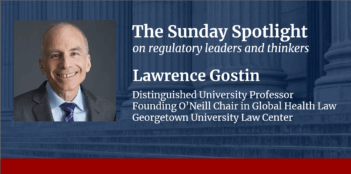
Stakeholders weigh in on a potential federal paid-leave program.
After his wife was diagnosed with stage-three colon cancer, Terrence Walker spent six years struggling to balance family care and a full-time job because no paid family leave program existed in Virginia.
Stories like Walker’s have become common across the United States. A lack of a national policy on paid leave has left the rules in state hands, and yet only a handful of states have implemented paid-leave policies. The resulting fragmented set of policies puts individuals like Walker in difficult situations and confronts employers with sometimes inconsistent state and local labor laws.
Now, a growing number of family advocates and business groups are encouraging a federal paid-leave program.
To date, only nine states and the District of Columbia have enacted paid family leave laws. With the recent November election, Colorado became the latest state to do so—joining California, New Jersey, Rhode Island, New York, Washington, Massachusetts, Connecticut, and Oregon. A number of municipal governments have also passed paid family leave laws.
In other states, legislators have started to consider similar laws. Walker shared his story with legislators in Virginia as it became the first Southern state to consider a system entitling all employees to paid leave to care for themselves or a loved one. Still, most Americans cannot access paid family leave. A September news release from the U.S. Bureau of Labor Statistics reported that only 21 percent of civilian workers have access to paid family leave.
At the federal level, the Family and Medical Leave Act provides certain employees with up to 12 weeks of unpaid leave each year. The law provides job and health insurance protection, but employers need not pay employees during their leave.
The first federal mandate for paid family leave came in response to the COVID-19 global pandemic. In March, Congress passed the Families First Coronavirus Response Act, allowing paid leave for certain employees in specified circumstances, such as those needing to care for a family member subject to quarantine. Congress renewed these paid-leave protections with the Consolidated Appropriations Act, 2021, but the protections will expire at the end of March 2021 unless Congress further renews them. Strikingly, many Americans have not taken advantage of this federally mandated paid leave because they do not know about it.
Because the emergency stimulus package applies only in limited circumstances related to the current crisis, stakeholders continue to call for a more permanent solution.
For example, more than 200 comments flooded in after the U.S. Department of Labor Women’s Bureau published a request for information seeking comments on paid family and medical leave in July. Many expressed support for a federal paid-leave program.
Even groups that have previously opposed federal paid family leave measures, such as the HR Policy Association and the U.S. Chamber of Commerce, submitted comments on how to structure a federal paid-leave program. The HR Policy Association noted the “labyrinth of regulations” that employers must currently deal with, and it suggested that a uniform federal standard preempting state and local requirements would reduce compliance costs. Likewise, the U.S. Chamber of Commerce emphasized the need to relieve employers of having to comply with state and local laws. The Chamber advocated a policy allowing employers to opt into a federal program or remain in state or local programs.
Many individuals, too, submitted comments in support of a federal paid-leave policy. A mother from Iowa described having to leave two careers to take care of her disabled daughter, noting the limited protection provided by the Family and Medical Leave Act. A social worker wrote that mothers should not have to choose between putting food on the table and caring for a sick child.
Other proponents of paid family leave highlighted the positive economic impacts of attracting more women to the workplace. According to an S&P Global study, bringing more women to the workforce could grow GDP by up to 10 percent in a few decades.
For women, paid family leave has become more important during the COVID-19 “she-cession,” with a disproportionately high number of women leaving the workforce. By supporting women’s ability to stay in the workforce, paid family leave can improve lifelong employment trajectories and earnings.
Critics of federal paid-leave policy, however, have highlighted the damaging impact that a federal mandate might have on small businesses. The National Federation of Independent Business (NFIB), which represents small and independent business members, has emphasized that many small businesses cannot operate if required to offer paid leave to their employees. NFIB has explained that about half of its members operate businesses with five or fewer employees, making it difficult to manage sudden leaves and pay for replacements. In addition, many small businesses operate with small profit margins and often cannot realistically raise the prices of their goods or services to cover paid-leave benefits. NFIB expressed opposition to any kind of federal paid-leave mandate but suggested that, if a federal paid-leave program must be implemented, the program should exempt small businesses.
As policymakers consider the various views about paid family leave, workers continue to face the challenge of balancing demands for work with the necessity to care for family members. With an increasing number of stakeholders advocating greater access to paid family leave, it remains to be seen how policymakers will respond.



